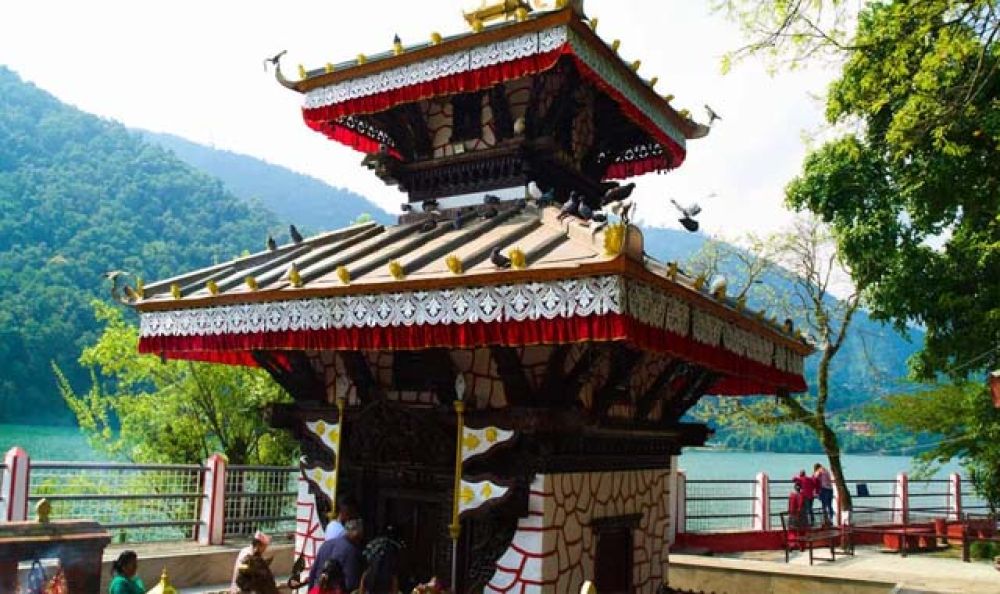

Nestled in the heart of the Pokhara Valley, the Tal Barahi Temple, also known as the Lake Temple or Barahi Temple, is a significant cultural and religious landmark for both locals and tourists visiting Nepal. This sacred Hindu temple is dedicated to the boar manifestation of the goddess Ajima, representing the female force Shakti. Positioned on a small island in the middle of Phewa Lake, Tal Barahi has been a beacon for pilgrims and adventure lovers alike.
Tourism in Pokhara has a relatively young history, gaining prominence with the opening of Nepal to the outside world in the 1950s. Before that, the only travelers to the region were adventurers and mountaineers seeking to scale the Himalayas. The establishment of the first road in 1968 and the city's airport further paved the way for a tourism boom.
The Tal Barahi Temple became an integral part of Pokhara's tourism landscape, attracting visitors with its unique location and serene environment. As the tourism industry in Nepal developed, the temple gained recognition not only as a spiritual haven but also as a must-visit destination known for its panoramic views of the Annapurna range and its reflection in the calm waters of Phewa Lake.
In the last few decades, Pokhara has witnessed a surge in adventure tourism. Activities such as paragliding, ultralight flights, and zip-lining offer incredible aerial views of the city, the lake, and the surrounding mountains. Meanwhile, traditional attractions like the Tal Barahi Temple continue to draw crowds, balancing the thrill of adventure with moments of cultural reflection and peace.
Ecotourism has also emerged as a significant trend, with travelers increasingly seeking sustainable and environmentally responsible experiences. Hotels and tour operators in the area are adopting green practices and promoting conservation efforts to protect the natural and cultural heritage of Pokhara.
Accessible only by boat, the journey to Tal Barahi Temple is as remarkable as the destination itself. Tourists can hire a rowboat or a paddleboat from the shores of Phewa Lake and make the tranquil crossing, often accompanied by the local rowers singing traditional songs. Once at the temple, visitors can observe the daily rituals and offerings made by devotees and enjoy a peaceful respite from the busier parts of Pokhara.
Whether it’s the thrill of adventure, the quest for tranquility, or the pursuit of spiritual enlightenment, Tal Barahi stands as a testament to Pokhara's diverse appeal. Its integration into the broader tapestry of Pokhara's tourism industry reflects the city's ability to adapt and grow while preserving its cultural and natural splendor.
Looking to the future, sustainable tourism development remains a core focus for Pokhara, with efforts to ensure that the city's growth does not come at the cost of its environment or cultural sites like Tal Barahi Temple. As tourism trends evolve, so too will the strategies to maintain Pokhara as a top destination for tourists from around the globe.